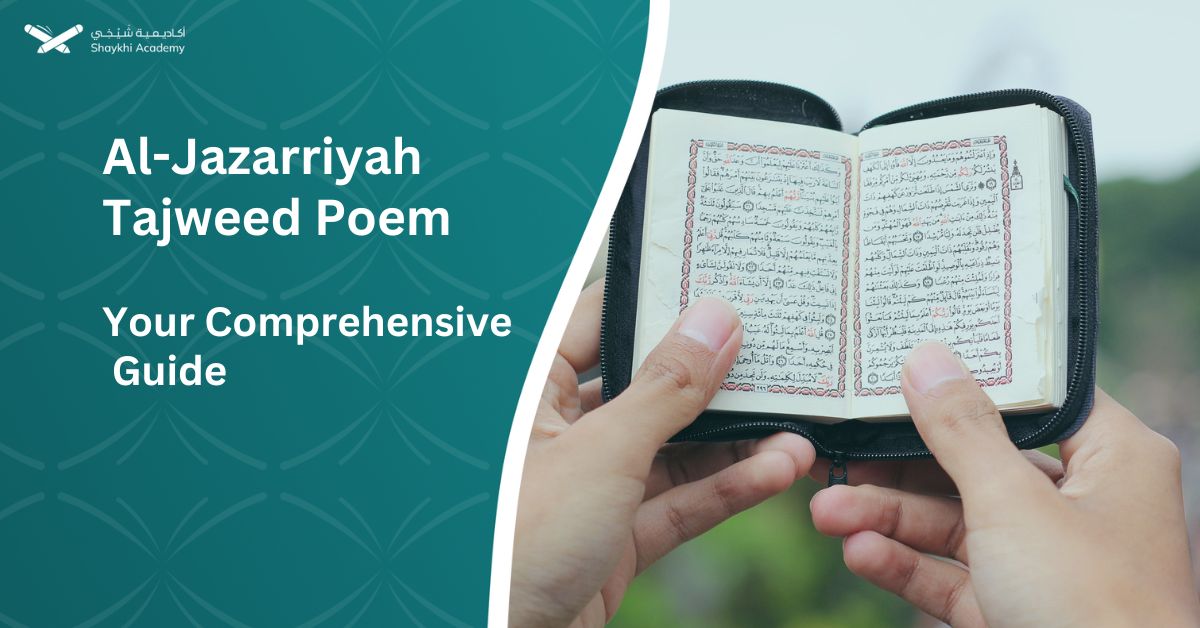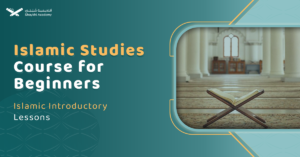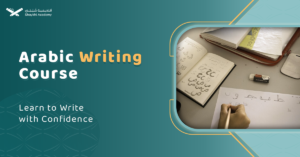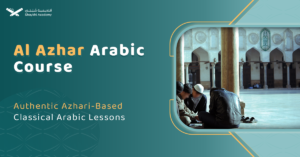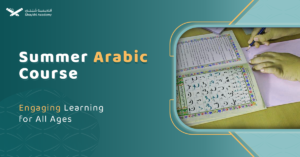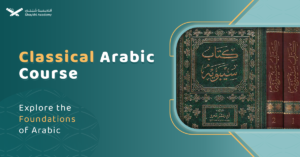The Al-Jazariyyah poem by Imam Muhammad ibn Muhammad ibn Al-Jazari, born in Damascus in 1350 CE, is a foundational work in Tajweed, the rules of Quranic recitation. Its comprehensive, rhythmic structure aids in memorization and is a trusted resource for both beginners and advanced learners in mastering accurate and beautiful Quranic recitation.
The Al-Jazariyyah poem, authored by the renowned scholar Imam Al-Jazari, stands as a timeless masterpiece in the realm of Tajweed, the art of Quranic recitation.
Composed in eloquent Arabic verse, this poem serves as a comprehensive guide, meticulously detailing the rules of Tajweed in a structured and accessible manner.
What Is the Al-Jazariyyah Tajweed Poem?
The Al-Jazariyah poem, known as “المقدمة الجزرية,” is a seminal work in the field of Tajweed, which refers to the set of rules governing the proper pronunciation and recitation of the Quran.
This poem has been a cornerstone for students and scholars of the Quran for centuries, providing a structured and detailed guide to mastering the art of Quranic recitation. Even now, Shaykhi Academy’s Tajweed course would use it as study material.
Who Is Al-Jazari?
The Al-Jazariyyah poem is authored by the esteemed Islamic scholar Imam Muhammad ibn Muhammad ibn Al-Jazari. Born in Damascus in 1350 CE, Imam Al-Jazari is recognized as one of the foremost authorities on the Quranic sciences and Tajweed.
His contributions to these fields have been monumental, and his works remain highly respected and widely studied. Imam Al-Jazari’s profound knowledge and commitment to the preservation of the Quran’s recitation have made him a pivotal figure in Islamic scholarship.
Such a seminal Islamic scholar is usually at the core of Islamic cultural courses such as the Islamic Studies course at Shaykhi Academy.
The Importance of Al-Jazariyyah Tajweed Poem:
The importance of the Al-Jazariyyah poem is highlighted through the following points in the context of Islamic education and the study of Tajweed:
1- Comprehensive Coverage of Tajweed Rules:
The Al-Jazariyyah poem provides an exhaustive overview of all essential Tajweed rules, ensuring that learners have a complete understanding of the principles required for accurate Quranic recitation.
2- Ease of Memorization:
The poem’s didactic, rhythmic style makes it easy to memorize. This poetic format aids in retention and allows students to recall the rules more effectively during recitation.
3- Authoritative Source:
Authored by Imam Muhammad ibn Muhammad ibn Al-Jazari, a leading figure in Quranic sciences, the poem carries significant scholarly authority, ensuring its content is trusted and respected in the Islamic world.
4- Educational Versatility:
The Al-Jazariyyah serves as both an introductory text for beginners and a detailed reference for advanced students and scholars, making it a versatile educational resource across different levels of learning.
5- Systematic Approach:
The poem is structured in a systematic manner, providing clear and organized instruction on the rules of Tajweed. This helps learners follow a logical progression in their studies.
6- Widely Recognized and Studied:
Over centuries, the poem has become a cornerstone in the study of Tajweed. It is widely recognized and studied in Islamic educational institutions around the world.
7- Enhanced Recitation Quality:
By mastering the rules outlined in the poem, reciters can significantly improve the quality of their Quranic recitation, ensuring it is both beautiful and correct. Therefore, many Quran tutors such as the ones teaching the Quran recitation course at Shaykhi academy cite and use it in their classes.
8- Preservation of Quranic Recitation:
The Al-Jazariyyah plays a crucial role in preserving the traditional and authentic methods of Quranic recitation, ensuring that these practices are passed down accurately through generations.
9- Cultural and Historical Significance:
As a work from the 14th century, the poem holds cultural and historical importance, reflecting the rich tradition of Islamic scholarship and the emphasis placed on the precise recitation of the Quran.
10- Resource for Educators:
The poem serves as an excellent teaching tool for educators, providing a structured and reliable resource for imparting the rules of Tajweed to students in a clear and effective manner.
The Contents of Al-Jazariyyah Tajweed Poem:
The poem covers various critical aspects of Tajweed, including detailed descriptions of the points of articulation for Arabic letters, explanation of the inherent characteristics of each letter, and in-depth coverage of key Tajweed rules such as Idgham, Ikhfa, and Iqlab:
1- Introduction to the Al-Jazariyyah Tajweed Poem:
This excerpt sets the stage for the study of Tajweed by emphasizing the importance of understanding the rules and principles before embarking on the recitation of the Quran, highlighting the comprehensive and systematic nature of Imam Al-Jazari’s work.
The Arabic text:
(1) يَقُـولُ رَاجـِي عَفْـوِ رَبٍّ سَـامِعِ – مُحَـمَّـدُ بْـنُ الْجَـزَرِىِّ الشَّافِـعِي
(2) الْـحَمْــدُ لِلَّـهِ وَصَـلَّـى اللّـَهُ – عَـلَـى نَبِـيِّـهِ وَمُـصْطــَفَـاهُ
(3) مُـحَـمَّـدٍ وَآلِــهِ وَصَـحْـبِـه – وَمُقْـرِئِ الْقُــرْآنِ مَـعْ مُحـِـبِّه
(4) وَبَـعْــدُ إِنَّ هَــذِهِ مُـقَـدِّمَـه – فيـماَ عَـلَـى قَـارِئِـهِ أَنْ يَعْلَـمهْ
(5) إذْ وَاجِـبٌ عَلَـيْـهِـمُ مُحَـتّــمُ – قَـبْـلَ الشُـرُوعِ أَوَّلاً أَنْ يَعْلـَمُوا
(6) مَـخَارِجَ الْحُـرُوفِ وَالـصِّـفَاتِ – لِـيَـلْفِـظُوا بِأَفْـصَــحِ اللُغَـاتِ
(7) مُحَررِي التَّـجْـوِيـدِ وَالمَوَاقِـف – وَما الَّـذِي رُسِّـمَ في المَصـاَحِـفِ
(8) مِنْ كُـلِّ مَقْطُوعٍ وَمَوْصـُولٍ بِـهَا – وَتَـاءِ أُنْـثَى لَمْ تَـكُنْ تُكْتَـبْ بِـهَ
Transliteration:
(1) Yaqūlu rājī ‘afwi rabbin sāmi‘ – Muḥammad ibn al-Jazarī ash-Shāfi‘ī
(2) Al-ḥamdu lillāhi wa ṣallā allāhu – ‘alā nabiyyihi wa muṣṭafāhu
(3) Muḥammadin wa ālihi wa ṣaḥbihi – wa muqri’i al-Qur’āni ma‘ muḥibbihi
(4) Wa ba‘du inna hādhihi muqaddimah – fīmā ‘alā qāri’ihi an ya‘lamah
(5) Idh wājibun ‘alayhim muḥattam – qabla ash-shurū‘ awwalan an ya‘lamū
(6) Makharija al-ḥurūfi waṣ-ṣifāt – liyalfiẓū bi afṣaḥi al-lughāt
(7) Muḥarrirī at-tajwīdi wal-mawāqif – wa mā alladhī russiama fī al-maṣāḥif
(8) Min kulli maqṭū‘in wa mawṣūlin bihā – wa tā’i unthā lam takun tuktabu bihā
Translation:
(1) The hopeful for the pardon of an All-Hearing Lord says – Muhammad ibn Al-Jazari Ash-Shafi’i
(2) Praise be to Allah, and may Allah send prayers – upon His Prophet and His chosen one
(3) Muhammad, his family, his companions – and the reciters of the Quran along with its lovers
(4) And after, indeed this is an introduction – regarding what a reciter must know
(5) As it is obligatory upon them, mandatory – before beginning, first of all, to know
(6) The articulation points of the letters and their attributes – to pronounce with the most eloquent languages
(7) The refiners of Tajweed and the pauses – and what is written in the manuscripts
(8) Of every disconnected and connected word in them – and the feminine ‘Tā’ which was not written with it
2- The Points of Articulation in Tajweed:
This passage from the Al-Jazariyyah poem provides a detailed guide to the articulation points of the Arabic letters, which is essential knowledge for anyone aspiring to perfect their Quranic recitation.
The Arabic text:
(9) مَخَارِجُ الحُروفِ سَبْعَةَ عَشَرْ – عَلَى الْذِي يَخْتَارُهُ مَنِ اخْتَبَرْ
(10) فَأَلِفُ الجَوُفِ وأُخْتَاهَا وَهى – حُرُوفُ مَدٍّ للْـهَوَاءِ تَنْتَهـي
(11) ثُمَّ لأَقْصَى الحَلْقِ هَمْزٌ هَاءُ – ثُمَّ لِـوَسْطِـهِ فَعَـيْنٌ حَـاءُ
(12) أَدْنَـاهُ غَيْنٌ خَاؤُهَا والْقَـافُ – أَقْصَى اللِّسَانِ فَوْقُ ثُمَّ الْكَافُ
(13) أَسْفَلُ وَالوَسْطُ فَجِيمُ الشِّينُ يـَا – وَالضَّادُ مِنْ حَافَتِهِ إِذْ وَلِيَــا
(14) اَلأضْرَاسَ مِنْ أَيْسَرَ أَوْ يُمْنَاهَا – وَالـلاَّمُ أَدْنـَاهَا لمُنْتَهَاهــَا
(15) وَالنُّونُ مِنْ طَرَفِهِ تَحْتُ اجْعَلُوا – وَالرَّا يُدَانِيهِ لِظَهْرٍ أَدْخــَلُوا
(16) وَالطَّاءُ وَالدَّالُ وَتَا مِنْـهُ وَمِنْ – عُلْيَا الثَّنَايَا والصَّفِيرُ مُسْتـَكِنْ
(17) مِنْهُ وَمِنْ فَوْقِ الثَّنَايَا السُّفْلَـى – وَالظـَّاءُ وَالذَّالُ وَثَا لِلْعُلْيــَا
(18) مِنْ طَرْفَيْهِما وَمِنْ بَطْنِ الشَّفَهْ – فَالْفَا مَعَ اطْرافِ الثَّنَايَا المُشْرِفَهْ
(19) للشَّـفَتَيْنِ الْـوَاوُ بَـاءٌ مِيـمُ – وَغُنَّـةٌ مَخْرَجُهـَا الخَيْشـُومُ
Transliteration:
(9) Makhāriju al-ḥurūfi sab‘ata ‘ashar – ‘alā alladhī yakhtāruhu man ikhtabar
(10) Fa’alifu al-jawfi wa ukhtāhā wa hiyā – ḥurūfu maddin lil-hawā’i tantahī
(11) Thumma li’aqṣā al-ḥalqi hamzun hā’ – thumma liwasṭihi fa‘aynun ḥā’
(12) Adnāhu ghaynun khā’uhā wal-qāf – aqṣā al-lisān fawq thumma al-kāf
(13) Asfal wal-wasṭu fajīm ash-shīn yā – waḍ-ḍādu min ḥāfatihi idh waliyā
(14) Al-aḍrāsa min aysara aw yumnāhā – wal-lāmu adnānā limuntahāhā
(15)Wan-nūnu min ṭarfihi taḥt uj‘alū – war-rā yudānihi liẓahrin adkhalū
(16) Waṭ-ṭā’u wad-dālu wata minhu wa min – ‘ulyā ath-thanāyā waṣ-ṣafīru mustakin
(17) Minhu wa min fawqi ath-thanāyā as-suflā – waẓ-ẓā’u wadh-dhālu wathā lil-‘ulyā
(18) Min ṭarfayhimā wa min baṭni ash-shafah – fal-fā ma‘ aṭrāfi ath-thanāyā al-mushrifah
(19) Lil-shafatayn il-wāw bā’ mīm – wa ghunnatun makhrajuhā al-khayshūm
Translation:
(9) The articulation points of the letters are seventeen – according to the one who investigates and chooses
(10) The alif of the empty space and its two sisters – are letters of elongation that end in the air
(11) Then for the deepest part of the throat, hamzah and hā’ – then for its middle part, ‘ayn and ḥā’
(12) Its nearest part, ghayn and khā’ – and qāf from the farthest part of the tongue above, then kāf
(13) Lower down and in the middle, jīm, shīn, yā’ – and ḍād from its edge when it is adjacent
(14) To the molars on either the left or right side – and lām is the nearest to its end
(15) And nūn from its tip below, make it – and rā’ close to it, to the inside of the upper gums
(16) And ṭā’, dāl, and tā’ from it and from – the upper front teeth, and the whistle is restrained
(17) From it and from above the lower front teeth – and ẓā’, dhāl, and thā’ from the upper ones
(18) From their tips and from the inside of the lip – fā’ from the edges of the protruding front teeth
(19) From the two lips, wāw, bā’, and mīm – and the nasal sound, its articulation is the nasal passage
3- Description of the Characteristics of Letters in Tajweed:
This passage from the Al-Jazariyyah poem provides a detailed explanation of the characteristics of the Arabic letters, which is essential for anyone aiming to master Tajweed and achieve precise and beautiful Quranic recitation.
The Arabic text:
(20) صِفَـاتُهَا جَهْـرٌ وَرِخْوٌ مُسْتَفِلْ – مُنْفَتِـحٌ مُصْمَـتَةٌ وَالضِّـدَّ قُـلْ
(21) مَهْمُوسُهَا (فَحَثّهُ شَخْصٌ سَكَتَ) – شَدِيدُهَـا لَـفْظُ (أَجِدْ قَطٍ بَكَـتْ)
(22) وَبَيْنَ رِخْوٍ وَالشَّدِيدِ ( لِنْ عُمَرْ) – وَسَبْعُ عُلْوٍ خُصَّ ضَغْطٍ قظْ حَصَرْ
(23) وَصَادُ ضَادٌ طَاءُ ظَاءٌ مُطْـبَقَه – وَفَـرَّ مِنْ لُبِّ الحُـرُوفُ المُذْلَقَهْ
(24) صَفِيـرُهَا صَـادٌ وَزَاىٌ سِينُ – قَلْـقَلَـةٌ قُـطْـبُ جَـدٍّ وَاللِّـينُ
(25) وَاوٌ وَيَـاءٌ سَكَنَـا وَانْفَتَحَـا – قَبْلَـهُماَ وَالاِنْحِـرَافُ صُـحَّـحَا
(26) في اللاًَّمِ وَالرَّا وَبِتَكْرِيرٍ جُعلْ – وَلِلتَّفَشِّي الشِّيـنُ ضَاداً اسْتَـطِـلْ
Transliteration:
(20) Ṣifātuhā jahrun wa rikhwun mustafil – munfatihun muṣmatatun wa-ḍḍidda qul
(21) Mahmūsuhā (faḥaththahu shakhaṣun sakat) – shadīdahā lafẓu (ajid qaṭṭin bakat)
(22) Wa bayna rikhwin wa-ash-shadīdi (lin ‘umar) – wa-sab‘u ‘ulwin khuṣṣa ḍaghta qaẓ ḥaṣar
(23) Wa ṣādu ḍādu ṭā’u ẓā’u muṭbaqah – wa-farra min lubbi al-ḥurūfu al-mudhlaqah
(24) Ṣafīruhā ṣādu wa zāy sīn – qalqalah qaṭbu jaddin wal-līn
(25) Wāwun wa yā’un sakanā wa-infataḥā – qablahumā wal-inḥirāfu ṣuḥḥiḥā
(26) Fī al-lām wa ar-rā wa-bitakrīrin ju‘il – wa li-at-tafash-shī ash-shīnu ḍādan istatill
Translation:
(20) Their characteristics: voiced, soft, lowered – open, sonorous, and their opposites, say
(21) Their whispered ones: (faḥaththahu shakhaṣun sakat) – their strong ones: (ajid qaṭṭin bakat)
(22) And between soft and strong: (lin ‘umar) – and seven high ones: khuṣṣa ḍaghta qaẓ ḥaṣar
(23) And the emphatic letters: ṣād, ḍād, ṭā’, ẓā’ – and the letters from the core: the fluid ones
(24) Their whistling ones: ṣād, zāy, sīn – their echoing ones: qaṭbu jaddin, and the soft ones
(25) Wāw and yā’ when still and open – before them, and the ones with deviation confirmed
(26) In lām and rā, and for repetition, it is placed – and for spreading, shīn, make ḍād clear
4- Importance of Adhering to Tajweed:
These verses underscore the profound significance of Tajweed in Quranic recitation, highlighting its role in preserving the integrity, beauty, and correctness of the Quran’s recitation.
The Arabic text:
(27) وَالأَخْذُ بِالتَّجْوِيدِ حَتْـمٌ لاَزِمُ – مَنْ لَمْ يُجَوْدِ الْقُـرَآنَ آثِــمُ
(28) لأَنَّهُ بِهِ الإِلَــهُ أَنْــزَلاَ – وَهَكَـذَا مِنْـهُ إِلَيْنَا وَصَـلاَ
(29) وَهُوَ أَيْضاً حِلْـَيةُ الـتِّلاَوَةِ – وَزِينَـةُ الأَدَاءِ وَالْقِــرَاءَةِ
(30) وَهُوَ إِعطْاءُ الْحُرُوفِ حَقَّهَا – مِنْ صِـفَةٍ لَـهَا وَمُستَحَقَّهَـا
(31) وَرَدُّ كُلِّ وَاحِـدٍ لأَصلِـهِ – وَاللَّفْـظُ فِي نَظِيرِهِ كَمِثـْلهِ
(32) مُكَمِّلاً مِنْ غَيْرِ مَا تَكَلُـفِ – بِاللُطْفِ فِي النُّطْقِ بِلاَ تَعَسُّف
(33) وَلَيْـسَ بَيْنَـهُ وَبَيْنَ تَرْكِهِ – إِلاَّ رِيَـاضَةُ امْـرِئٍ بِفَكِّـه
Transliteration:
(27) Wal-akhḏu bi-t-tajwīdi ḥatman lāzim – man lam yujawwid al-Qur’āna āthim
(28) Li-annahū bihi al-ilāhu anzala – wa-hakadhā minhu ilaynā wa-ṣalā
(29) Wa-huwa ayyiḍan ḥilātu at-tilāwati – wa-zīnatu al-adā’i wal-qirā’ati
(30) Wa-huwa i‘ṭā’u al-ḥurūfi ḥaqqahā – min ṣifatin lahā wa-mustahqahā
(31) Wa-raddu kulli wāḥidin li-aṣlihī – wal-lafẓu fī naẓīrihi ka-mithlih
(32) Mukammilan min ghayri mā takalufi – bi al-lutfi fī an-nuṭqi bila ta‘assuf
(33) Wa-laysa baynahu wa-bayna tarkihi – illā riyaḍatu amri’in bifakkihi
Translation:
(27) Adhering to Tajweed is an obligatory requirement – for anyone who does not beautify the Quran is sinful
(28) Because through it, Allah revealed – and thus it has come to us and remains
(29) It is also the adornment of recitation – and the embellishment of delivery and reading
(30) It is giving each letter its due right – based on its characteristics and what is deserving
(31) It is returning each one to its origin – and pronouncing it like its counterpart
(32) Completing it without exaggeration – with gentleness in pronunciation, not harshness
(33) There is nothing between its practice and neglect – except the indulgence of a person in his own opinion
5- Tafkheem (Emphasis) and Tarqeeq (Softening):
These verses reinforce the meticulous nature of Tajweed and the importance of adhering to its rules to ensure the accurate and beautiful recitation of the Quran.
The Arabic text:
(34) فَرقَّقَنْ مُسْتَفِلاً مِـنْ أَحْـرُفِ – وَحَاذِرَنْ تَفْخيِمَ لَفْـظِ الأَلِفِ
(35) كَهَمْزِ أَلْحَمْدُ أَعُوذُ إِهْــدِنَا – أللَّهَ ثُــمَّ لاَمَ لِلَّهِ لَنَــا
(36) وَلْيَتَلَطَّفْ وَعَلَى اللَّهِ وَلاَ الضْ – وَالمِيمِ مِنْ مَخْمَصَةٍ وَمِنْ مَرَضْ
(37) وَبَاءَ بَرْقٍ بَاطِلٍ بِهِمْ بِذِي – وَاحْرِصْ عَلَى الشِّدَّةِ وَالجَهْرِ الَّذِي
(38) فِيهَا وَفِى الْجِيِمِ كَحُبِّ الصَّبْرِ – ورَبْوَةٍ اجْتُثَّتْ وَحَجِّ الْفـَجْرِ
(39) وَبَيِّنَنْ مُقَلْقَلاً إِنْ سَكَنَا – وَإِنْ يَكُنْ فِي الْوَقْفِ كَانَ أَبْيَـنَا
(40) وَحَاءَ حَصْحَصَ أَحَطْتُ الْحَقُّ – وَسِينَ مُسْتَقِيمِ يَسْطُوا يَسْقُوا
Transliteration:
(34) Farraqqan mustafilan min aḥrufi – waḥāẓiran tafkhīma lafẓi al-’alifi
(35) Kahamzi al-ḥamdu a‘ūdhu ihdinā – Allāha thumma lāma lillāhi lanā
(36) Walyatalaṭṭaf wa ‘alā Allāhi wa-lā aḍ-ḍ – wal-mīmi min makhmasatin wa min maraḍ
(37) Wabā’a barqin bāṭilin bihim bi dhī – waḥriṣ ‘alā ash-shiddati wa al-jahrī alladhī
(38) Fīhā wa fī al-jīmi kaḥubbi aṣ-ṣabri – wa rabbwaṭin ajtuththat wa ḥajjil-fajri
(39) Wabayyinan muqallaqan in sakannā – wa in yakun fī al-waqfi kāna abyānā
(40) Waḥā’a ḥaṣḥaṣa aḥaṭtu al-ḥaqq – wa sīna mustaqīmi yastū yasqū
Translation:
(34) So make soft the lowly letters – And beware of pronouncing the Alif with emphasis.
(35) Like the hamza in al-hamdu, a’udhu, ihdina – Allah, then the lam of Allah for us.
(36) And let him be gentle, and upon Allah, and not the Dal – And the Mim from hunger and from illness.
(37) And he came with futile lightning with them with the one who – And be diligent in the hardness and the loudness that
(38) In it and in the Jim like the love of patience – And a hill that was uprooted and the pilgrimage of the dawn.
(39) And explain the shaken one if it is calm – And if it is in the pause, it will be clearer.
(40) And the Ha’ has become clear, I have encompassed the truth – And the straight Seen, they oppress, they give to drink.
5- The Raa and Lam Letters:
This part covers specific guidelines related to the articulation of certain Arabic letters and sounds, such as the softening of the Ra letter, the emphasis of the Lam in the name of Allah, and the rules around full closure (Ittiba’) of certain sounds.
The Arabic text:
(41) وَرَقِّقِ الرَّاءَ إِذَا مَا كُسِرَتْ – كَذَاكَ بَعْدَ الْكَسْرِ حَيْثُ سـَكَنَتْ
(42) إِن لَّمْ تَكُنْ مِنْ قَبْلِ حَرْفِ اسْتِعْلاَ – أَوْ كـَانَت الْكَسْرَةُ لَيْسَتْ أَصْلاَ
(43) وَالْخُلْفُ فِي فِرْقٍ لِكَسْرٍ يُوجَدُ – وَأَخْفِ تَكْرِيراً إِذَا تـُشَدَّدُ
(44) وَفَخِّم اللاَّمَ مِنِ اسْمِ اللَّهِ – عَنْ فَتْحٍ او ضَمٍ كَعَبْدُ اللَّـهِ
(45) وَحَرْفَ الاِسْتِعْلاَءِ فَخِّمِ وَاخْصُصَا – الاِطْبَاقَ أَقْوَى نَحْوُ قَالَ وَالْعَصـَا
(46) وَبَيِّنِ الإِطْبَاقَ مِنْ أَحَطتُ مَعْ – بَسَطتَ وَالخُلْفُ بِنَخْلُقكُّمْ وَقـَعْ
(47) وَاحْرِصْ علَىَ السُّكُونِ فِي جَعَلْنَا – أَنْعَمْتَ وَالمَغْضُوبِ مَعْ ضـَلَلْنَا
(48) وَخَلِّصِ انْفِتَاحَ مَحْذُوراً عَسَى – خَوْفَ اشْتِبَاهِهِ بِمَحْظُوراً عَصـَى
(49) وَرَاعِ شِدَّةً بِكَافٍ وَبَتَا – كَشِرْكِكُمْ وَتَتَوَفَّى فِتْنَتـَا
(50) وَأَوَّلَىْ مِثْلٍ وَجِنْسٍ إنْ سَكَنْ – أَدْغِمْ كَقُل رَّبِّ وَبَلَ لاَ وَأَبِـنْ
(51) فِي يَوْمِ مَعْ قَالُوا وَهُمْ وَقُلْ نَعَمْ – سَبِّحْهُ لاَ تُزِغْ قُلُوبَ فَالْتَقـَمْ
Transliteration:
(41) Wa raqqiqi ar-ra’a idha ma kusirati – kadhalika ba’da al-kasri haythu sakana.
(42) In lam takun min qabli harfi i’tila’ – aw kanat al-kasratu laysat asla.
(43) Wa al-khulfu fi firqin li-kasrin yujadu – wa akhfi takraran idha tushaddadu.
(44) Wa fakhkhimi al-lama mina ismi Allah – ‘an fatin aw dammim ka-‘abdullahi.
(45) Wa harfa al-i’tila’i fakhkhim wakhsussa – al-itbaqa aqwa nahwa qala wa al-‘asa.
(46) Wa bayyin al-itbaqa min ahatta ma’a basatta – wa al-khulfu bi-nakhluqkum waqa’a.
(47) Wa ahris ‘ala as-sukuni fi ja’alna – an’amta, wa al-maghdhubi ma’a dalalna.
(48) Wa khallisi al-infitaha mahdhura ‘asa – khawfa ishtibahihi bi-mahdhura ‘asa.
(49) Wa ra’i shiddatan bi-kafin wa bata’ – ka-shirkikum wa tatawaff-a fitnatana.
(50) Wa awwala mithl wa jins in sakana – adghim ka-qul rabbi wa bal la wa abin.
(51) Fi yawmi ma’a qalu wa hum wa qul na’am – sabbihhu la tuzigh quluba faltaqim.
Translation:
(41) And make the Ra soft when it is kasrah (has a kasrah vowel) – likewise after the kasrah where it is sukoon (quiescent).
(42) If it is not before a letter of elevation – or if the kasrah is not the original (vowel).
(43) And the difference is found in a separated kasrah – and conceal the trilling when it is doubled.
(44) And emphasize the Lam in the name of Allah – whether it is from a fathah or a dammah, like ‘Abdullah.
(45) And the letter of elevation, emphasize it and specify the full closure – the strongest, like ‘qala’ and ‘al-‘asa’.
(46) And explain the full closure from ‘ahatta’ with ‘basatta’ – and the difference occurs in ‘nakhluqkum’.
(47) And be diligent on the sukoon in ‘ja’alna’ – ‘an’amta’, and ‘al-maghdhubi’ with ‘dhalalna’.
(48) And purify the opening – being cautious lest it be mistaken for a prohibition, as in ‘asa’.
(49) And observe the strength in a kaf and bata’ – like in ‘shirkikum’ and ‘tatawaff-a fitnata’.
(50) And for the first of a similar and generic, if it is sukoon – assimilate, like ‘qul rabbi’ and ‘bal la’, and explain.
(51) In ‘yawmi’ with ‘qalu’ and ‘hum’, and say ‘na’am’ – glorify Him, do not cause the hearts to swerve, then seize.
6- The Letters of Dhad and Zaa:
This extract focuses on the proper pronunciation of the Arabic letters Dhad (ض) and Zaa (ظ), providing guidelines on how to distinguish them and articulate them correctly. It also includes instructions on emphasizing certain words and sounds to achieve the proper Quranic recitation.
The Arabic text:
(52) وَالضَّادَ بِاسْتِطَالَةٍ وَمـَخْرَجِ – مَيِّزْ مِنَ الظَّاءِ وَكُلُّهَا تَجِي
(53) في الظَّعْنِ ظِلَّ الظُهْرِ عُظْمِ الْحِفْظِ – أَيْقَظْ وَانْظُرْ عَظْمِ ظَهْرِ اللَّفْظِ
(54) ظَاهِرْ لَظَى شُوَاظِ كَظْمٍ ظَلَمَا – أُغْلُظْ ظَلامَ ظُفْرٍ انْتَظِرْ ظَمَا
(55) أَظْفَرَ ظَنَّاً كَيْفَ جَا وَعَظْ سِوَى – عِضِينَ ظَلَّ النَّحْلُ زُخْرُفٍ سَوَا
(56) وَظَلْتُ ظَلْتُمْ وَبِرُومٍ ظَلُّوا – كَالْحِجُرِ ظَلَّتْ شُعَرَا نَظَلُّ
(57) يَظْلَلْنَ مَحْظُورَاً مَعَ المُحْتَظِر – وَكُنْتَ فَظَّاً وَجَمِيعٍ النَّظـَرِ
(58) إِلاَّ بِوَيْلٌ هَلْ و أَولَى نَاضِرَهْ – وَالْغَيْظِ لاَ الرَّعْدِ وَهُودٍ قَـاصِرَهْ
(59) وَالْحَظُّ لاَ الْحَضُّ عَلَى الطَّعَامِ – وَفي ضَنِينٍ الْخلاَفُ سَامِي
(60) وَإِنْ تَــلاَقَــيَا البَــيَانُ لاَزِمُ – أَنْـقَـضَ ظَـهْـرَكَ يَـعَضُّ الظَّـالِمُ
(61) وَاضْـطُـرَّ مَعْ وَعَظْتَ مَعْ أَفَضْـتُمُ – وَصَـفِّ هَــا جِـبَاهُـهُـم عَلَيْهِمُ
Transliteration:
(52) Wa al-dhada bi-istitalatin wa makhraji, mayyiz mina az-za’i wa kulluhunna tajji.
(53) Fi az-za’ni dhilla az-zuhri ‘udhmil-hifzi, aiqaẓ wanẓur ‘aẓmi ẓahri al-lafẓi.
(54) Ẓahir laẓa shuwāẓi kaẓmin ẓalama, ughluz ẓalama ẓufrin intaẓir ẓama.
(55) Aẓfara ẓannan kayfa ja’a wa ‘iẓ siwā, ‘iḍīna ẓalla an-nahlu zukhrufi sawā.
(56) Wa ẓaltu ẓaltum wa bi-rūmin ẓallū, kal-hijuri ẓallat shu’ara naẓallu.
(57) Yaẓlalna mahẓūrān ma’a al-muhtaẓir, wa kunta faẓẓan wa jamī’in an-naẓari.
(58) Illā bi-wayl, hal wa awlā naḍirah, wa al-ghayẓi la ar-ra’di wa hūdin qaṣirah.
(59) Wa al-ḥaẓẓu la al-ḥaḍḍu ‘ala aṭ-ṭa’āmi, wa fī ḍanīnin al-khilāfu sāmī.
(60) Wa in talāqayā al-bayānu lāzim, anqaḍa ẓahraka ya’aḍḍu aẓ-ẓālim.
(61) Wa iḍṭurra ma’a wa’aẓta ma’a afaḍtum, wa ṣaffi hā jihāhuhum ‘alayhim.
Translation:
(52) And distinguish the Dhad with elongation and its point of articulation, from the Zaa, and all of them come.
(53) In az-Za’n, the shade of the midday, the greatness of preservation, awaken and look at the greatness of the speech’s back.
(54) Manifest blaze of a spark of suppression, oppress the darkness of a nail, anticipate thirst.
(55) He succeeded in a supposition, how did it come? And admonish besides, they chewed, the bee remained in an ornament equally.
(56) And I remained, you remained, and with the Romans they remained, like the rocks, the poets remained, we remain.
(57) They will remain forbidden along with the one who is restrained, and you were harsh, and in the totality of the sight.
(58) Except with woe, is it and the first to see, and the anger, not the thunder, and Hud, its shortness.
(59) And the share, not the urging towards the food, and in a miserly one, the disagreement is lofty.
(60) And if the two meet, the clarification is necessary, it breaks your back, the oppressor bites.
(61) And be compelled along with what you admonished along with what you presented, and align their foreheads upon them.
7- The Ghunnah with Nun and Meem:
This excerpt focuses on the rules of Ghunnah (nasalization) in recitation, particularly with regards to the letters Nun and Meem when they are doubled or followed by certain other letters. It provides guidelines on when to clearly articulate the Ghunnah and when to conceal it.
The Arabic text:
(62) وأَظْهِرِ اْلغُنَّةَ مِنْ نُونٍ وَمِنْ – مِيمٍ إِذاَ مَا شُدِّدَا وَأَخْفِيَنْ
(63) الْمِيمَ إِنْ تَسْكُنْ بِغُنَّةٍ لَدَى – بَاءٍ عَلَى المُخْتَارِ مِنْ أَهْلِ اْلأَدَا
(64) وَاظْهِرَنْهَا عِنْدَ بَاقِي اْلأَحْرُفِ – وَاحْذَرْ لَدى وَاوٍ وَفَا أنْ تَخْتَفِي
Transliteration:
(62) Wa aẓhiri al-ghunnata min nūnin wa min, mīmin idhā mā shuddidat wa akhfiyān.
(63) Al-mīma in taskunn bi-ghunnatin lada, bā’in ‘ala al-mukhtāri min ahli al-adā.
(64) Wa aẓhirannahā ‘inda bāqī al-aḥruf, waḥdhār lada wāwin wa fā’ an takhtatifī.
Translation:
(62) And manifest the Ghunnah from a Nun and from, a Meem when they are doubled, and conceal them.
(63) The Meem, if it becomes quiescent with a Ghunnah next to, a Bā’ according to the preferred opinion of the people of performance.
(64) And manifest it before the rest of the letters, and beware at a Waw and a Fa’ that it may disappear.
8- The Rules of Tanween:
This excerpt discusses the rules governing Tanween (nunation) and the letter Nun, including when to apply Izhhar (clear articulation), Idgham (assimilation), and Iqlab (substitution). It also covers the rules around the assimilation of Nun with Ghunnah (nasalization) in certain contexts.
The Arabic text:
(65) وَحُكْمُ تَنْوِينٍ وَنُونٍ يُلْفى – إِظْهَارٌ ادْغَامٌ وَقَلبٌ اخْفــَا
(66) فَعِنْدَ حَرْفِ الحَلْقِ أَظْهِرْ وَادَّغِمْ – فِي اللاَّمِ وَالرَّا لاَ بِغُنَّةٍ لَزِمْ
(67) وَأَدْغِمَنْ بِغُنَّةٍ في يُومــِنُ – إِلاَّ بِكِلْمَــةٍ كَـدُنْيَا عَنْوَنُو
(68) وَاْلَقْلبُ عِنْدَ الْبَا بِغُنَّةٍ كذا – لاِخْفَاء لَدَى بَاقِي الحُرُوفِ أُخِذَا
Transliteration:
(65) Wa hukmu tanwīnin wa nūnin yulfā, iẓhārun idghāmun wa qalbun ikhfā.
(66) Fa’inda harfi al-halqi aẓhir wa’ddghim, fi al-lāmi wa ar-rā’ lā bi-ghunnatin lazim.
(67) Wa adghiman bi-ghunnatin fī yūminin, illā bi-kilmatin ka-dunya ‘anwanū.
(68) Wa al-qalbu ‘inda al-bā’ bi-ghunnatin kadhā, li-ikhfā’i lada bāqī al-ḥurūfi ukhidhā.
Translation:
(65) And the ruling of Tanween and Nun that is found, is Izhhar, Idgham, and Iqlab concealment.
(66) So at the letter of the throat, manifest and assimilate, in the Lam and the Ra’, do not make it necessary with a Ghunnah.
(67) And assimilate with a Ghunnah in ‘yūminin’, except with a word like ‘dunya’, they are pronounced.
(68) And the Iqlab at the Bā’ with a Ghunnah as well, for the concealment at the rest of the letters is taken.
9- The Rules of Madd:
This extract covers the rules of Madd (elongation) in Quranic recitation, outlining the different types – Lazim (obligatory), Wajib (necessary), and Ja’iz (optional) – and the specific contexts in which each applies. It provides guidance on the duration of elongation and the conditions that determine the type of Madd.
The Arabic text:
(69) والمدُّ لاَزِمٌ وَ وَاجِبٌ أَتَى – وَجَاَئزٌ وَهـْوَ وَ قَصــْرٌ ثَبَتَا
(70) فَلاَزِمٌ إِن جَاءَ بَعْدَ حَرْفِ مَدْ – سَاكِنَ حَالَيْنِ وَبِالطُّولِ يُمـَدْ
(71) وَوَاجِبٌ إنْ جاءَ قَبْلَ هَمْزَةِ – مُتَّصِلاً إِنْ جُمِعــَا بِكِلْمَـةِ
(72) وَجَائزٌ إِذَا أَتَى مُنْفَصِلاَ – أَوْعَرَضَ السُّكُونُ وَقْفاٌ مُسْجَلاَ
Transliteration:
(69) Wa al-maddu lāzimun wa wājibun atā, wa jā’izun wa huwa wa qaṣrun thabatā.
(70) Fa-lāzimun in jā’a ba’da ḥarfi madd, sākina ḥālayni wa bi-aṭ-ṭūli yumadd.
(71) Wa wājibun in jā’a qabla hamzatin, muttaṣilan in jumi’ā bi-kilmatin.
(72) Wa jā’izun idhā atā munfaṣilan, aw ‘araḍa as-sukūnu waqfan musjala.
Translation:
(69) And the Madd is Lazim (obligatory), and Wajib (necessary) that came, and Ja’iz (optional), and it is, and qasrun (short) is established.
(70) So Lazim, if it comes after a letter of Madd, quiescent in two states, and it is elongated with the length.
(71) And Wajib, if it comes before a hamzah, connected if they are combined in a word.
(72) And Ja’iz, if it comes separated, or the sukoon (quiescence) occurs as a determined pause.
10- The Rules of Wuquf (Pausing):
This last excerpt focuses on the rules of Wuquf (pausing) in Quranic recitation. It outlines the three main types of pauses – Tamm (complete), Kafi (sufficient), and Hasan (good) – and the criteria for determining which type of pause is appropriate in different contexts.
The Arabic text:
(73) وَبَـعْدَ تَجْوِيـدِكَ لِلْحُرُوفِ – لاَبُدَّ مِنْ مَعْرِفَـةِ الْـوُقُـوفِ
(74) وَالاْبِتِـدَاءِ وَهْـىَ تُقْسَـمُ إِذَنْ – ثَلاَثَةٌ تَامٌ وَكَـافٍ وَحَسَــنْ
(75) وَهْـىَ لِمَا تَـمَّ فَإنْ لَّمْ يُوجَــدِ – تَعَلُق أَوْ كَانَ مَعْنَـى فَابْتَدى
(76) فَالتَّامُ فَالْكَافِى وَ لَفْظــاً فَامْنَعَنْ – إِلاَّ رُؤُس الآىِ جَوِّزْ فَالحَسَنْ
(77) وَغَيْرُ مَا تَـمَّ قَبِيـــحٌ وَلَـهُ – الوقَفُ مُضْطُـرَّاً وَيُبْدَا قَبْلَـهُ
(78) وَلَيسَ في الْقُرْآنِ مِنْ وَقْفٍ وَجَبْ – وَلاَ حَرَامٌ غَيْرَ مَـالَـهُ سَبَبْ
Transliteration:
(73) Wa ba’da tajwīdika li-al-ḥurūfi, lā budda min ma’rifati al-wuqūfi.
(74) Wa al-ibtidā’i wa hiya tuqsamu idhān, thalāthatun tāmun wa kāfin wa ḥasan.
(75) Wa hiya limā tamma fa’in lam yūjad, ta’allūq aw kāna ma’nan fa’ibtadā.
(76) Fa at-tāmu fa al-kāfī wa lafẓan fa’im’na, illā ru’ūs al-āyi jawwiz fa al-ḥasan.
(77) Wa ghayr mā tamma qabīḥun wa lahu, al-waqfu muḍṭurran wa yubdā qablahu.
(78) Wa laysa fī al-qur’āni min waqfin wajab, wa lā ḥarāmun ghayra mā lahu sabab.
Translation:
(73) And after your Tajweed of the letters, it is necessary to know the pauses.
(74) And the beginning, and it is then divided into three: Tamm (complete), Kafi (sufficient), and Hasan (good).
(75) And they are for what is complete, so if there is no connection or the meaning calls for it, then begin.
(76) So the Tamm, then the Kafi, and in wording, then forbid, except for the beginnings of the verses, allow the Hasan.
(77) And other than what is complete is improper, and for it is the pause out of necessity, and it begins before it.
(78) And there is no pause in the Quran that is obligatory, and no prohibition except for what has a reason for it.
11- The Rules of the Letter Taa:
This excerpt delves into the rules related to the pronouncing the letter Taa (ت) in certain words and phrases found in the Quran.
The Arabic text:
(79) وَاعـرِفْ لِمَقْطُوعٍ وَمَوْصُـولٍ وَتَا – فِي مُصْحَفِ الإِمـامِ فِيـمَا قَدْ أَتَى
(80) فَاقْطَـعْ بعَشْرِ كَلِمَـــاتٍ أنْ لاَّ – مَـعْ مَلْــــجَإٍ وَلاَ إِلــهَ إِلاَّ
(81) وَتَعْبُدُوا يَاسينَ ثَانِــي هُـودَ لاَ – يُشْرِكْنَ تُشْرِكْ يَدْخُلَنْ تَعْلوا عَلَـى
(82) أَن لاَّ يَـقُولُوا لاَ أَقُـولَ إِن مَّا – بِالرَّعْـدِ وَالمَفُتُوحَ صِلْ وَعَن مَّـا
(83) نُهُوا اقْطَعوا مِن مَّا بِرُومٍ وَالنِّسَـا – خُلْفُ المُنَـافِـقِين أَم مَّنْ أَسَّسـاَ
(84) فُصِّـلَتِ الَّنسَـا وَذِبْحِ حَيْثُ مَـا – وَأَن لَّمِ المَفْتُــوحَ كَسْـرُ إِنَّ مَـا
(85) اَلانْعَامِ وَالمَفْتُوحَ يَدْعُونَ مَعَــاَ – وَخُلْفُ الاَنْفَـالِ وَنَحْــلٍ وَقَعَـا
(86) وَكُلَّ مَا سَأَلتُمُــوهُ وَاخْتُــلِفْ – رُدُّوا كَذَا قُلْ بِئْسَمَا وَالوَصْـلُ صِفْ
(87) خَلَفْتُمُوِنى وَاشْتَرَوْا في مَـا قْطَعَا – أُوحِى أَفَضْتُمُ اشْتَهَـتْ يَبْـلُو مَعَـا
(88) ثَانِـي فَعَـلْـنَ وَقَعَتْ رُومٌ كِلاَ – تَنْزِيلُ شُعَـرَاءٍ وَغَـيْـرَ ذي صِـلاَ
(89) فَأَيْنَمَـا كَالنَّحْـلِ صِلْ وَ مُخْتَلِفْ – في الشُّعَرَا الأَحْزَابِ وَالنِّسَا وُصِفْ
(90) وَصِـلْ فَــإِلَّمْ هُودَ أَلْن نَّجْعَلاَ – نَجْمَـعَ كَيْلاَ تَحْزَنُوا تَأْسَوْا عَلَـى
(91) َحـجُّ عَلَيْكَ حَـَرجٌ وَقَـطَعْهُمْ – عَن مَّن يَشَاءُ مَن تَوَلَّـى يَـوْمَ هُـمْ
(92) ومَـالِ هَـذَا وَالَّذينَ هَــؤْلاَ – تَحـِينَ في الإِمَـامِ صِـلْ وَوُهِّــلاَ
(93) وَوَزَنُـوهُمُ وَكَـالُـوهُمُ صِـلِ – كَــذاَ مِنَ أل وَهَـا وَيَا لاَ تَفْـصِلِ
(94) وَرَحـْمَتُ الزُّخْرُفِ بِالتَا زَبرَهْ – الاَعْرَافِ رُومٍ هُودٍ كَافِ الْبَــقَرَهْ
(95) نعْمَتُهَا ثَلاَثُ نَحْلٍ ابْـــرَهَمْ – مَعَا أَخِيــرَاتُ عُقُـودُ الثَّانِ هَـمْ
(96) لُـقْمَانُ ثُمّ فَاطِــرٌ كَالطُّــورِ – عَمِـرَانُ لَــعْنَتَ بِهَا وَالنُّـــورِ
(97) وَامْرَأَتٌ يُوسُفَ عِمْرَانَ الْقَصَصْ – تَحْرِيمَ مَعْصِيَتْ بِقَدْ سَمِعْ يُخَــصْ
(98) شَجَــرَتَ الدُّخِـانِ سُنَّتْ فَاطِرِ – كُـلاً وَالاَنْفَـالَ وَحرفَ غـَافرِ
(99) قُـرَّتُ عَيْنٍ جَنّتٌ فـي وَقَعَـتْ – فِطْـرَتْ بَقِـيَّتْ وَابْنَتْ وَكَلِمـَتْ
(100) أَوْسَطَ اَلاعْرَافِ وَكُلُّ مَا اخْتُلِفْ – جَمْـعَا وَفَـرْداً فيهِ بِالتَـاءِ عُرِفْ
Transliteration:
(79) Wa’rif li-maqṭū’in wa mawṣūlin wa tā, fī muṣḥafi al-imāmi fīmā qad atā.
(80) Faqṭa’ bi-‘ashri kalimātin an lā, ma’ mal’jā’in wa lā ilāha illā.
(81) Wa ta’budū yāsīna thānī hūda lā, yushrikna tushrik yadkhulna ta’lū ‘alā.
(82) An lā yaqūlū lā aqūla in mā, bi-ar-ra’di wa al-maftūḥa ṣil wa ‘an mā.
(83) Nuhū iqṭa’ū min mā bi-rūmin wan-nisā’, khulfu al-munāfiqīna am man asasā.
(84) Fuṣṣilati an-nisā’i wa dhībḥi ḥaythu mā, wa an lami al-maftūḥa kasru inna mā.
(85) Al-an’āmi wa al-maftūḥa yad’ūna ma’ā, wa khulfu al-anfāli wa naḥlin waqqa’ā.
(86) Wa kulla mā sa’altumūhu wa ukhtulif, rudū kadhā qul bi’samā wal-waṣlu ṣif.
(87) Khalaftumūnī wa ishtaraw fī mā qaṭa’ā, ūḥiya afalḍtum ishtahat yablū ma’ā.
(88) Thānī fa’alantā waqqa’at rūmun kilā, tanzīlu shu’arā’i wa ghayru dhī ṣilā.
(89) Fa’aynamā kan-naḥli ṣil wa mukhtarif, fī ash-shu’arā’ al-aḥzābi wan-nisā’ wuṣif.
(90) Wa ṣil fa’illam hūda al-lan naj’alā, najma’a kayla taḥzanū ta’saw ‘alā.
(91) Ḥajju ‘alayka ḥarajun wa qaṭa’hum, ‘an man yashā’u man tawalā yawma hum.
(92) Wa māli hādhā wal-ladhīna hā’ulā’, taḥīna fī al-imāmi ṣil wa wuhhilā.
(93) Wa wazanūhumu wa kālūhumu ṣil, kadhā mina al-wāhā wa yā lā tafṣil.
(94) Wa raḥmatu az-zukhruf bi-at-tā’ zabara, al-a’rāfi rūmin hūdin kāfi al-baqara.
(95) Ni’matuhā thalāthu naḥlin ibrāhim, ma’ā akhīrātu ‘uqūdi ath-thānī ham.
(96) Luqmān thumma fāṭirun ka-aṭ-ṭūri, ‘imrānu la’natu bihā wan-nūri.
(97) Wa imra’atun yūsufa ‘imrāna al-qaṣaṣi, taḥrīma ma’ṣiyat bi-qad sami’a yukhkhaṣṣ.
(98) Shajarat ad-dukhāni sunnat fāṭiri, kullān wa al-anfāla wa ḥarfa ghāfiri.
(99) Qurrata ‘aynin jannatin fī waqqa’at, fiṭrat baqiyyat wa ibnat wa kallimat.
(100) Awsaṭa al-a’rāfi wa kullu mā ukhtulif, jam’an wa fardan fīhi bi-at-tā’i ‘urif.
Translation:
(79) And know the disconnected and the connected Taa, in the Mushaf of the Imam, in what has come.
(80) So disconnect with ten words that there is no, with a refuge, and no deity except.
(81) And you worship Yaseen, the second of Hud, they do not associate, they associate, they will enter, they elevate over.
(82) That they do not say, I do not say, if what, with the thunder, and the open, connect, and from what.
(83) They were forbidden, disconnect from what with the Romans and the women, the difference of the hypocrites or who founded.
(84) The women are detailed, and the sacrifice wherever, and that you do not connect the open, the breaking of “inna” what.
(85) The Cattle, and the open, they call together, and the difference of the Spoils and the Bee, and it occurred.
(86) And all that you asked them, and it was differed, return likewise, say how bad, and the connection describe.
(87) You succeeded me, and they bought in what was disconnected, it was revealed, you presented, it desired, it tested together.
(88) The second, they did, and the Romans occurred, both, the revelation of the poets, and other than one with a connection.
(89) So wherever, like the Bee, connect and differ, in the poets, the Groups, and the women, describe.
(90) And connect, so if not Hud, we will not make, we will gather, so that you do not grieve, you do not sorrow over.
(91) The Pilgrimage is upon you burdensome, and disconnect them, from whoever He wills, whoever turned away on the Day they.
(92) And what is this and those are, when in the Imam, connect and explain.
(93) And they weighed them, and they measured them, connect, likewise from the Waw and Yaa, do not separate.
(94) And the mercy of the Ornaments with the Taa, it was concealed, the Heights, the Romans, Hud, the sufficient of the Cow.
(95) Its blessing, three, the Bee, Abraham, along with the last of the contracts, they are.
(96) Luqman, then Fatir, like the Mount, Imran, the curse in it, and the Light.
(97) And the wife of Yusuf, Imran, the Stories, the prohibition of disobedience, he was heard, he is specified.
(98) The tree of the Smoke, the Sunnah of Fatir, all, and the Spoils, and the letter of Ghafir.
(99) The coolness of the eye, the Gardens, it occurred, the nature, the remainder, and she built, and she spoke.
(100) The middle of the Heights, and all that was differed, collectively and individually, in it, the Taa is known.
12- The Rules of Hamzat Al-Wasl:
This excerpt covers the rules regarding the pronunciation of the Hamzat al-Wasl (the conjunctive hamzah) in various grammatical contexts.
The Arabic text:
(101) وَابْدَأُ بِهَمْزِ الْوَصْلِ مِنْ فِعْلٍ بِضَمْ – إنْ كَانَ ثَالِثٌ مِنَ الْفِعْلِ يُضَـمْ
(102) وَاكْسِرْهُ حَالَ الْكَسْرِ وَالْفَتْحِ وَفِى – الاَسْمَاءِ غَيْرَ اللاَّمِ كَسْرَهَا وَفِى
(103) ابْنٍ مَعَ ابْنَةِ امْرِىءٍ وَاثْنَيْنِ – وَامْرَأةٍ وَاسْمٍ مَعَ اثْنَتَيْنِ
(104) وَحَاذِرِ الْوَقْفَ بِكُلِّ الحَرَكَهْ – إِلاَّ إِذَا رُمْتَ فَبَعْضُ حَـرَكَهْ
(105) إِلاَّ بِفَتْحٍ أَوْ بِنَصْبٍ وَأَشِـمْ – إِشَارَةً بِالضَّمْ فِي رَفْعٍ وَضَمْ
Transliteration:
(101) Wabda’ bi-hamzi al-waṣli min fi’lin bi-ḍamm, in kāna thālithun mina al-fi’li yuḍamm.
(102) Waksirhu ḥāla al-kasri wal-fatḥi wa fī, al-asmā’i ghayra al-lāmi kasrahā wa fī.
(103) Ibni ma’a ibnati imri’in wa ithnayni, wa imra’atin wa ismin ma’a ithnatayn.
(104) Wa ḥādhiri al-waqfa bi-kulli al-ḥarakah, illā idhā rummta fa-ba’ḍu ḥarakah.
(105) Illā bi-fatḥin aw bi-naṣbin wa ashim, ishāratan bi-aḍ-ḍammi fī raf’in wa ḍamm.
Translation:
(101) And begin with the Hamzat al-Wasl from a verb with a dammah, if it is the third of the verb, it is emphasized.
(102) And make it kasrah in the state of kasrah and fatḥah, and in the nouns other than the Lam, make its kasrah, and in.
(103) A son with the daughter of a man, and two, and a woman, and a name with two.
(104) And beware of the pause with all the vowels, except when you intend, then a portion of the vowel.
(105) Except with a fatḥah or a naṣb, and indicate with a dammah in the rafa’ and dammah.
13- The Concluding Part of the Poem:
This is the concluding part of the text, where the author presents a summary and signing off. The author expresses gratitude for being able to present this guide on the principles of Tajweed (the rules of Quranic recitation) to the reader. The passage also includes a salutation and blessings upon the Prophet Muhammad and his companions.
The Arabic text:
(106) وَقَدْ تَقَضَّى نَظْمِىَ المُقَدَّمَهْ – مِنَّى لِقَارِئِ القُرَآنِ تَقْدِمَهْ
(107) أَبْيَاتُهَا قَافٌ وَزَاىٌ فِي الْعَدَدْ – مِنْ يُحْسِنِ التَّجْوِيدَ يَظْفَرْ بِالرَّشَدْ
(108) وَالحَـمْـدُ لِلِه لَهَا خِـتامُ – ثُمَّ الصَّلاَةُ بَعْدُ وَالســَّلاَمُ
(109) عَـلَى النَّبِـىِّ المُـصْطَـفى وَآلِـهِ – وَصَــحْـبِـهِ وتـابـعِ منوالــهِ
Transliteration:
(106) Wa qad taqaḍḍā naẓmī al-muqaddamah, minnī li-qāri’i al-qur’āni taqdimah.
(107) Abyātuhā qāfun wa zāyun fī al-‘adad, min yuḥsini at-tajwīda yaẓfar bi-ar-rashad.
(108) Wal-ḥamdu lillāhi lahā khitām, thumma aṣ-ṣalātu ba’du was-salām.
(109) ‘Alā an-nabiyyi al-muṣṭafā wa ālih, wa ṣaḥbih, wa tābi’i manwālih.
Translation:
(106) And my poetic composition has indeed concluded, from me, a foreword for the reader of the Quran.
(107) Its verses are 100 in number, from whoever excels in Tajweed, he will attain guidance.
(108) And all praise is for Allah, for it is the conclusion, then the blessings and peace.
(109) Upon the chosen Prophet, and his family, and his companions, and those who follow his way.
Understanding of the Quran with Shaykhi Academy’s Online Tajweed Course.
In Shaykhi Academy’s Tajweed course, our comprehensive curriculum is designed to help you master the rules of Tajweed with ease.
Through the renowned Al-Jazariyyah poem, you will learn and memorize the fundamental rules of Tajweed in a concise and systematic manner. This poem, known for its clarity and effectiveness in teaching Tajweed, will not only help you improve your recitation but also enhance your understanding of the Quran’s message.
Why Choose Shaykhi Academy?
- Connect with highly qualified native tutors.
- Flexible scheduling to suit your busy lifestyle.
- Affordable classes tailored for all levels.
- Accessible from anywhere around the globe.
Discover Our Range of Courses:
- Arabic Noorani Qaida: Lay a solid foundation for Quranic studies.
- Online Quran Classes for Kids: Engaging lessons for lifelong learning.
- Tajweed Rules for Kids: Learn to recite with confidence.
- Quran Hifz for Kids: Step-by-step guidance to memorize the Quran.
- Quran for Adults: Introduce yourself to Quran reading and Tajweed rules.
- Online Arabic Courses: Master the language of the Quran.
- Islamic Studies: A wide range of topics related to Islam, including theology, law, Quranic studies, Hadith.
Don’t Miss Out on Your Chance to Excel!
Whether you’re a beginner or seeking advanced knowledge, Shaykhi Academy can guide you! Book your free trial now and make Ramadan 2024 your Quranic turning point!
Join us today and take the first step towards reciting the Quran with precision and beauty.

Conclusion:
The Al-Jazariyah poem, “المقدمة الجزرية,” authored by Imam Muhammad ibn Muhammad ibn Al-Jazari, is a crucial text in Tajweed, the art of Quranic recitation. It has been a fundamental resource for centuries, offering a comprehensive, structured, and easy-to-memorize guide on the rules for accurate Quranic pronunciation.
Born in Damascus in 1350 CE, Imam Al-Jazari is esteemed for his significant contributions to Quranic sciences. His poem remains authoritative and versatile, serving both beginners and advanced students in Islamic education.
The Al-Jazariyah covers articulation points, letter characteristics, and essential Tajweed rules like Idgham, Ikhfa, and Iqlab, preserving the tradition and enhancing the quality of Quranic recitation.
Overall, the Al-Jazeriyah poem stands as a cornerstone in the study of Tajweed, reflecting Imam Al-Jazari’s profound knowledge and his commitment to the preservation of the Quran’s recitation in its most authentic form.
